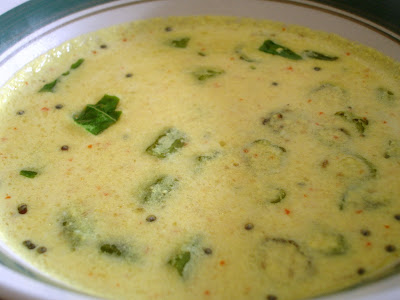My
simple (and rather obvious) hypothesis is that the success of most
North-Indian based curries and gravies lies in the garam masala (or
spice-blend) that goes into it. Although there are so many zillions of
garam masala (and generic masala) brands in the market, there are
probably very few that come close to the authentic blend prepared by
expert home-chefs. With life being short, and the number of brands in
the market increasing by the week, it’s almost impossible to test all of
these to identify the optimal garam masala brand. So, I got into the
habit of constantly pestering my North-Indian friends for suggestions
and tips.
None
of my Punjabi, Bihari or other friends from the north-western part of
India use a store-bought masala. Oh no, they don’t. It is as
sacrilegious as a madrasi or South-Indian using store-bought sambar
powder. It’s close to blasphemy to even consider it. Everyone has their
own home-grown, treasured recipe for the masala powder that’s so
elusively perfect. And no matter how many times I have prodded,
requested, and bugged them for the recipe or even a hint of it, they
have all politely shook their heads feigning ignorance, or widened their
eyes appalled at the audacity of my request to pry their precious
family recipe. It’s understandable. I don’t blame them. But my curiosity
doesn’t let me shelve the mystery so soon.
So,
after all these years of sniffing different masalas, and experimenting
now and then with a different mix, I narrowed down a couple of my
favorite store-bought masalas. Then, I read the ingredients at the back
of the pack and decided I would just experiment with the measurements
and see what I end up with. So, that’s what I did. Of course, I don’t
have access to all the exotic spices listed - clove leaves, stone flower
etc. But that’s ok - I’m making a trip to the Indian store to comb the
spice racks another time. But for now, here is a pretty decent start to prepare a
very basic garam masala powder.
Much
of the measurements are tuned to suit my preference in the olfactory
and taste departments. For instance, I love cardamom - I’m close to
obsessed with its aroma. So, to me, cardamom is a major masala note in
most good masala powders. Cardamom + clove + fennel is a favorite blend
of mine. So they all feature. But since clove and fennel can easily
overpower the delicate cardamom flavor, I have reduced their quantities
in ratio to the cardamom. Mustard + Cumin + pepper + coriander is a very
classic Indian flavor, so they are present too. In addition, other
strong spices such as nutmeg + star anise + cinnamon are also added, but
in muted amounts. I find these flavors to be distracting if added in
excess. So, according to my half-baked knowledge and random
experimentation, here is the formula.
Ingredients:
- 2 tablespoons cardamom seeds (not the husk/shell, just the seeds)
- 2 teaspoons fennel seeds
- 1 teaspoon of cloves
- 2 tablespoons coriander seeds
- 2 tablespoons black pepper corns
- 1 tablespoon cumin
- 1 tablespoon mustard seeds
- 1 dry red chilly
- 2 inch piece of cinnamon
- 1 star anise (or 2 small ones)
- 1 teaspoon freshly grated nutmeg
Preparation:
- Dry
roast all the ingredients together (except the grated nutmeg) for 5-10
minutes until the aromas of the spices begin to assault the kitchen - in
a good way
- Grind the cooled spices along with grated nutmeg to a fine powder.
- Store in an air-tight jar at room temperature.

Anand
and I were pleasantly surprised by the results. However, being a lowly
South-Indian, I do not make any claims that this is a lovely clone of
the authentic recipe. No, it’s not. But most of the ingredients that
make the classic garam masla are present in this (except for stone
flower, clove leaves, black cardamom). In my next batch, I will probably
experiment with the measurements a little more, add a few black
cardamoms and stone-flowers, etc.
But
even if this isn’t the authentic spice-blend, this experiment of mine
is yet another unequivocal proof that freshly prepared spice-blends make
SO much difference! The spices are much sharper, the aromas are
stronger, and a little goes a long way to infuse so much depth of flavor
to the dishes. So, if there’s anyone who questions the unnecessary need
to make home-made masala when it’s easy to pick a couple of
store-bought ones, trust me when I say, it makes a worthwhile
difference. And besides, this is a fun “science” project!















